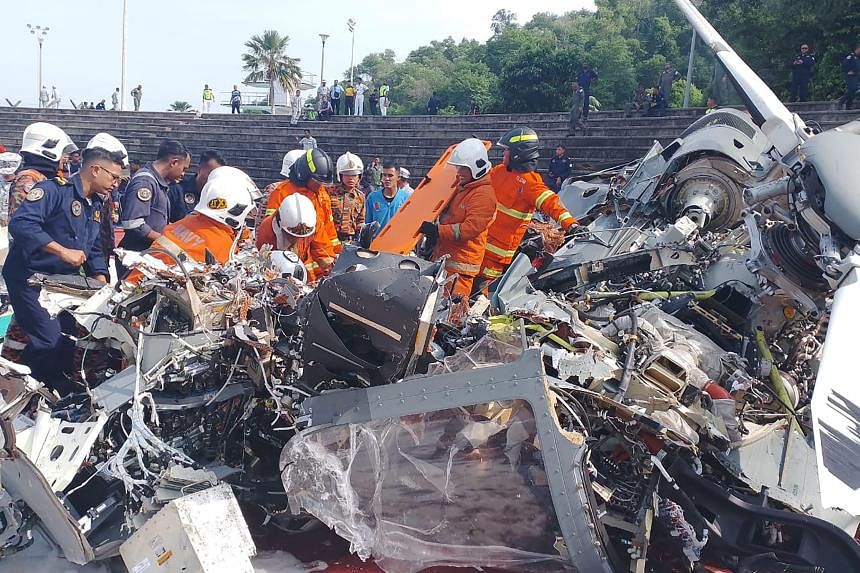PETALING JAYA – The ill-fated crash involving two Malaysian navy helicopters that collided in mid-air on April 23 during a rehearsal is an isolated incident with two such cases happening in the past, say aviation experts.
They said formation or aerobatic flying is a dangerous business, adding that the unfortunate crash was unexpected since such incidents do not happen often in Malaysia.
The April 23 crash involved 10 people on board who were rehearsing together for the first time for an upcoming parade.
Regarding formation flying accidents in Malaysia, the last time it happened was back in 1985 when a Royal Malaysian Air Force (RMAF) pilot and his assistant crashed their aircraft during an aerobatic show in Kuantan.
“The other formation flying incident also happened in the 1980s involving one pilot in Alor Setar who was killed in the crash,” said former RMAF pilot, Captain Prof Ab Manan Mansor.
He said safety measures were always the key when it came to formation flying, which included factors such as experience, synchronisation, maintenance of the aircraft and the type of helicopters involved.
“When doing formation flying, we always use the same type of aircraft. When I did it before, all four or six of us used the Bell 47 (aircraft) and we never mixed the make of the helicopters.
“Secondly, it is also important to always start the training with a loose formation for a few rounds just to get the feeling and synchronisation with each other before we go for a close formation.
“In the recent incident, the helicopter at the front was the Agusta (HOM helicopter) type while the one in the back was Fennec, so the configuration can be a bit tricky there for the wingmen on both left and right side (to determine) their perspectives,” he said.
Captain Ab Manan, who is the Malaysian Pilots Association president, added that formation flying was all about synchronisation and following the leader’s instructions very closely, which could be difficult given the speed the aircraft is going.
“Sometimes, people couldn’t follow the leader and it’s very risky. At the speed that you’re going, checking left and right won’t be so easy, which is why you must be effective together. It’s about solid teamwork.
“In other countries, the formation flying pilots stay together, eat together, basically do everything together to maintain their... effectiveness,” he said.
Malaysia Airlines former regional head pilot, Datuk Captain Nik Ahmad Huzlan Nik Hussain, said the pilots’ experience was a factor in determining the cause for the crash, but noted that this is not necessarily the case when it came to formation flying.
Given that the incident occurred during training which was in a controlled environment, Captain Nik Ahmad said investigation into the crash could easily obtain crucial information such as records of the helicopter maintenance and skills of the pilots.
Aviation expert associate professor, Major Dr Mohd Harridon Mohamed Suffian, said another critical safety measure in ensuring the overall health of the aircraft was to closely check the flight monitoring system. THE STAR/ASIA NEWS NETWORK

